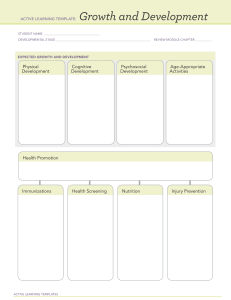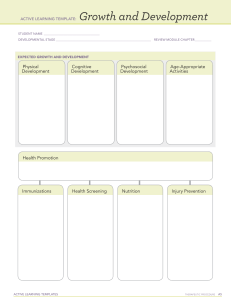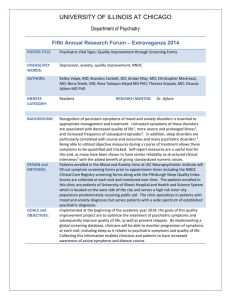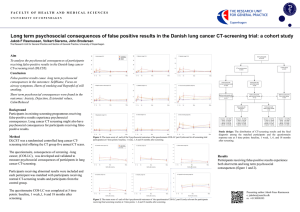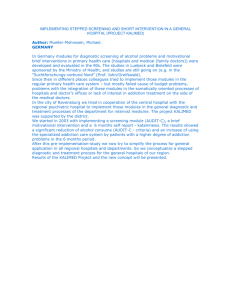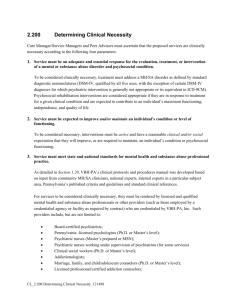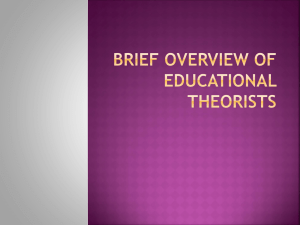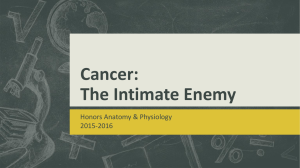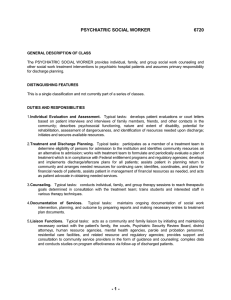October 7th and 12th
advertisement
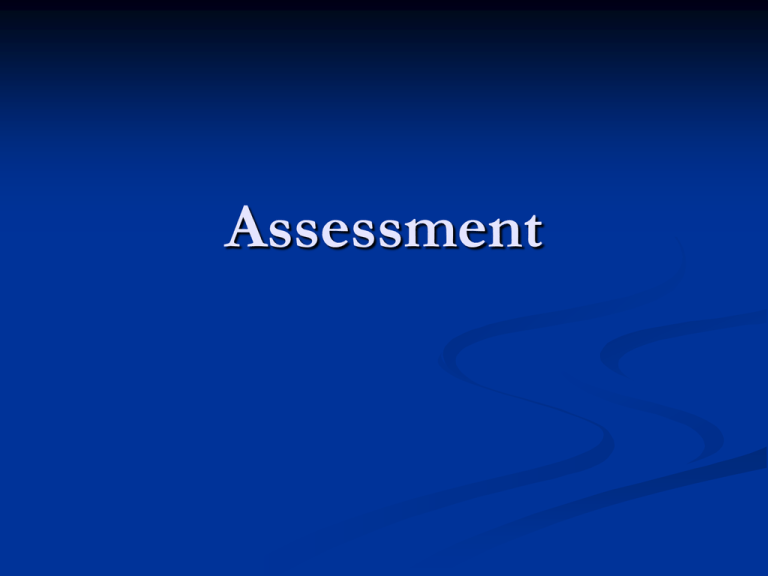
Assessment General Points re: Assessment Screening is different than assessment. 1. • 2. 3. 4. Identifies whether further attention is warranted. Appendix H Assessment identifies needs and guides treatment. Assessment helps you get to know the client. Assessment creates a holistic picture of the client. Basic Components Engage the client Psychosocial History Mental Status Exam Strengths and wellness Sometimes questionnaires, e.g. MAST, Beck Depression Inventory, Mental Health Screening Form III, etc. Safety – suicide, harm to others, domestic violence Trauma Culturally relevant Watch “Mary” Interview Observe Thinking Behavior Emotion Avoid interpretation, drawing conclusions, making judgments Write down what you see Sources of information The client The client, later Collaterals: parents, partners, siblings, adult children Previous records Parole/probation officer *Remember confidentiality laws!!! Quiz topics 4 explanations for relationship between chem. Dep and mental disorder (secondary substance abuse, secondary psychiatric, common factor and bidirectional) Quadrants of care What does DSM IV-TR stand for and what is it’s purpose Multiaxial system – 5 axes Difference between assessment and screening Sources of information for assessment Components of assessment Rules for distinguishing substancerelated from psychiatric sx ***History of symptom (sx) onset ***Quality of sx ***What happens over 4 week period of abstinence? *Family history (hx) of m.h. or cd? *Tx hx? *Response to medication Case discussion 1. 2. 3. 4. 5. Read the scenario Identify sx. Do NOT draw conclusions…just list emotions, behaviors, cognitive process or content that seems like a sx. Create a timeline of past and current sx. Include psychosocial stressors on timeline. Which of the “rules” might be relevant? Stage of Change Assessment What changes does Bill need to make? Drinking Social life Working Counseling What stage is he at for each (pg. 94) Emotional, Behavioral or Cognitive Conditions and Complications American Society of Addiction Medicine (ASAM) Dimension 3 (of 6) Areas of risk that need to be assessed: Dangerousness/lethality Interference with addiction recovery efforts. Social functioning Ability for self-care Course of illness-what is this person’s pattern of sx Treatment Matching – Figure 4-3, pg. 97 Small groups You will draw three slips of paper Review the sections you draw and discuss: What do you know? What further information would help you provide the best treatment match?
